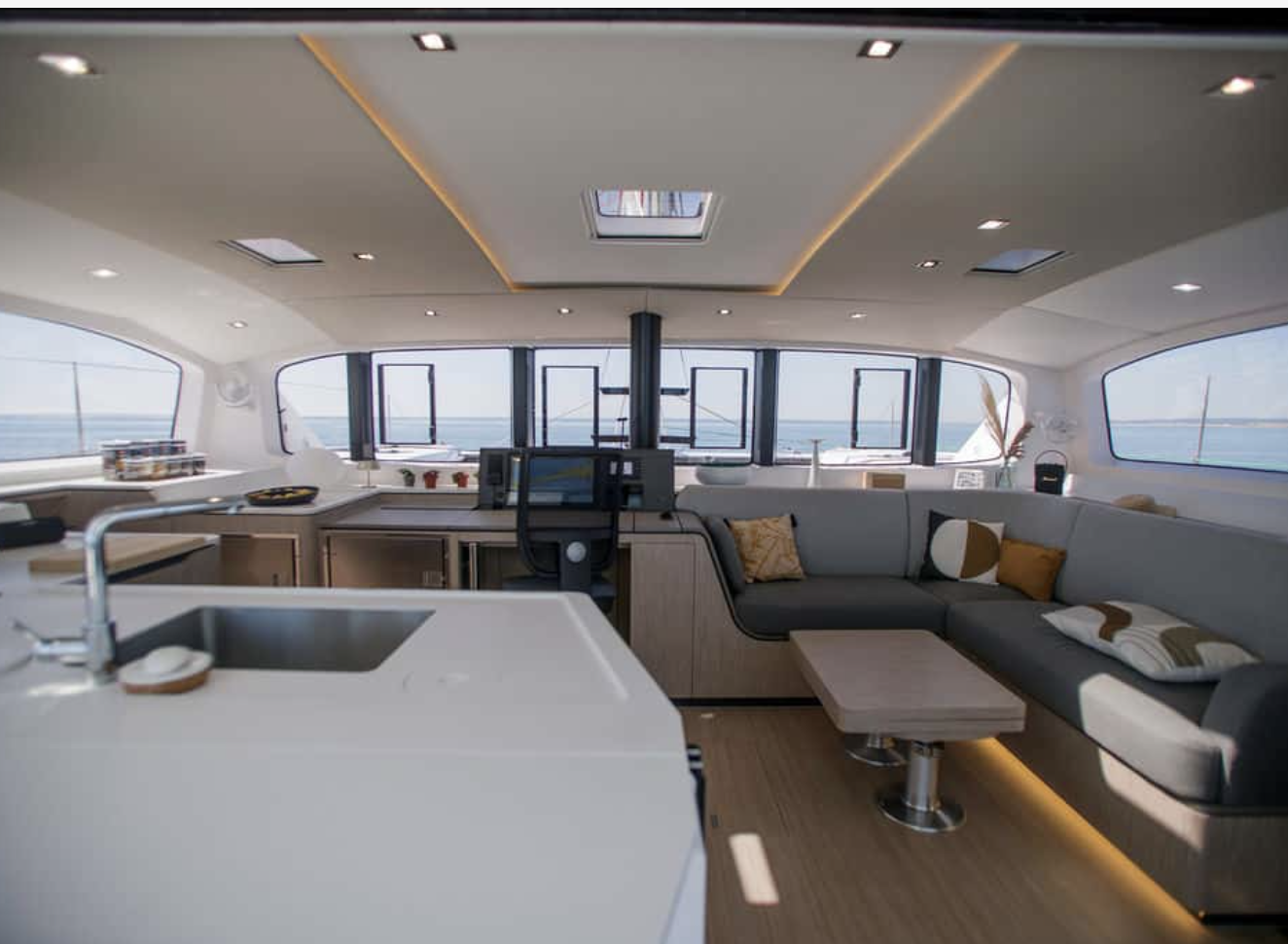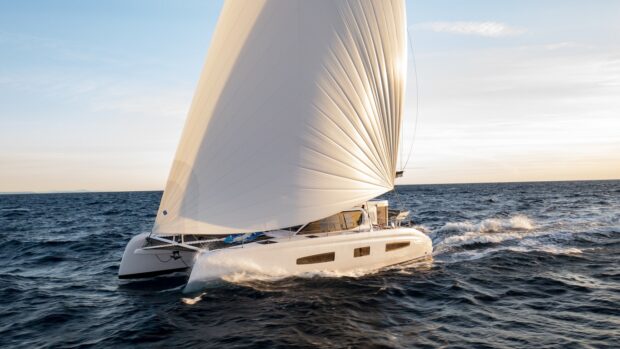I had the good fortune to sail with Rick and Julie Palm aboard their wonderful Outremer 51, Archer, from Hampton, VA to the BVI in the Salty Dawg Fall Rally. The boat was nothing short of awesome.
As we emerged from the mouth of the Chesapeake Bay right after starting, we had a northeast breeze blowing about 15 knots over our port quarter. With working sail set, Archer surged along at between 14 and 16 knots, occasionally actually sail faster that the wind.
We made it to the BVI in record time and had one of those offshore passages that stir you to come back for more blue-water sailing.
The 51 proved to be a very successful design for Outremer, the French builder based in La Grande Motte on the Mediterranean, known for performance cruising cats, most with daggerboards.
After the 51, the new 50-footer in their line was the 55 that incorporated many design features and details that were considered improvements and refinements from the earlier design. The 55 was lighter, roomier, more comfortable and faster.
So, when Outremer set out to design a model that could replace the 51, they took a lot of what they had learned in the 55 and applied it to the new smaller cat. The result is a kind of hybrid of the 55 and the 51, yet it is a completely new boat.

The naval architecture for the 52 was done by the famous firm VPLP while a lot of the aesthetics and refined details are the contribution of the noted French designer Patrick Le Quement.
Note the aft raked bows and the neatly rounded shapes of the sterns. These say “Outremer” and will make the brand recognizable from across the bay. Similarly, the flat top of the cabin and cockpit hard top are one visual line that sits well above the slightly reverse curve of the sheer line.
Noticeably different from the 51, the windows in the 52 and the hull glazing are much larger and provide a truly enhanced visual experience for those inside the boat and those standing witches in inclement conditions.
The cockpit and the saloon have been made more or less one space separated by sliding doors that disappear when open. The helm has a double seat, like the 55, and has an articulated wheel that can fold down sideways into the cockpit so you can drive under the protection of the cabin and hard top while keeping watch through the huge saloon windows forward. (We saw this innovation first aboard a Balance cat but it is now being adopted by several builders.)
With the saloon doors open, the galley counter becomes a buffet for those eating at the lovely, varnished teak cockpit table. On the 51, we spent a lot of time at the table while on passage and later in harbor.
The 52’s saloon is full of light and has opening windows forward for a free flow of breeze in warm conditions. The L-shaped dinette will seat six. Across from it, the galley provides a ton of working area.
A nav station is built in at the forward end of the saloon and I can certainly imagine spending night watches here with the instruments and red cabin lights dimmed and the off watch sleeping peacefully in the dinette.
The 52 has four double cabins in the hulls, which share a head between them. But, the builder knows we’re not all in need of four cabins so they have designated the port forward cabin as My Free Space. This can have bunk beds, a workshop, a large storage and closet area or a finished home office.
My positive experience sailing the 51 1,400 miles offshore certainly colors my impression of the 52. Plus, I have been in the Outremer factory and seen in person the quality of construction and the attention to detail that makes the brand a leader in performance and liveaboard comfort.
I’d go to sea on the 52 any day of the week and would love to cruise it far and wide.












